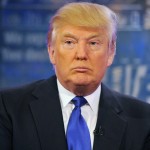A nice article on how Columbus – the man who discovered a new continent and virtually changed the future of the next many centuries of the world – ultimately died a Failure! Something that is remiscent of the last days of Alexander.
A little genocide here, some slavery there, several mutinies, and multiple executions of crew members later, and Columbus fell out of favor with the Spanish crown and the public. When he died he was surrounded by family and by the trappings of his substantial income. But he went to his grave with the gouging sense of injustice he couldn’t forgive and of failure he couldn’t explain.
His reputation began to sour during his second expedition. Flush with the success of 1492, he had been named viceroy and governor of all the islands he discovered. Some 1,400 men jostled for berths on his 17 ships bound for the gold-studded heaven on earth in the west. But the large crew was difficult to feed, and the work to be done—digging canals, searching for gold—was backbreaking. Instead of entering paradise, the Spanish settlers found hell on earth, complete with an inept governor. At the helm of a ship, Columbus’s navigational instinct, supreme confidence, and unflagging ambition made him an excellent admiral. But his leadership skills disappeared as soon as he set foot ashore. When he returned to Spain in June 1496 with 500 Indian slaves—much to the chagrin of Queen Isabella, who deplored slavery—he plunged into a cauldron of accusations from sick, embittered crew members, among them a priest he had denied rations to after he chastised Columbus for whipping recalcitrant settlers.
King Ferdinand, for his part, was worried about competition with the Portuguese for claim to the new territory. The king of Portugal theorized that further lands lay south of Cuba. Columbus promised to find them for Spain. He persuaded the religious Isabella to back him by observing that any gold he might discover could fund a crusade to reclaim Jerusalem from the infidels.
On May 30, 1498, six caravels sailed west from Sanlúcar de Barrameda, three on the usual passage for Hispaniola, where Columbus had left his brother Bartholomew in charge, and three in untested waters along the equator. But after a month of travel on the new course, Columbus and his crew found themselves becalmed for eight days under a blazing sun that putrefied their food and, they feared, might ignite the ships. When a breeze finally rescued them, Columbus steered toward familiar channels in the north, forsaking the route that would have brought him to the Amazon basin.
His men still managed to become the first Europeans to see South America. Lookouts spotted the forested hills of Venezuela’s Paria peninsula in August, but the sailors, conditioned by the Caribbean’s intricate beadwork of archipelagos, assumed this was just one more island. Weeks of staring into the sun to navigate had left Columbus’s eyes weepy, swollen, and bloodshot, and he simply couldn’t see the clues that Paria might be part of something larger. When his crewmen went ashore, on August 5, the first Europeans to walk on the American mainland, he stayed in bed. But when those same men returned, on August 11, with tales of an immense fresh-water delta—so big it must issue from a river longer than any island could hold—they planted the first seeds of doubt in Columbus’s mind. And as his attempts to circumnavigate Paria revealed more and more coastline, he floundered in confusion.
Tags: Christopher Columbus, USA














